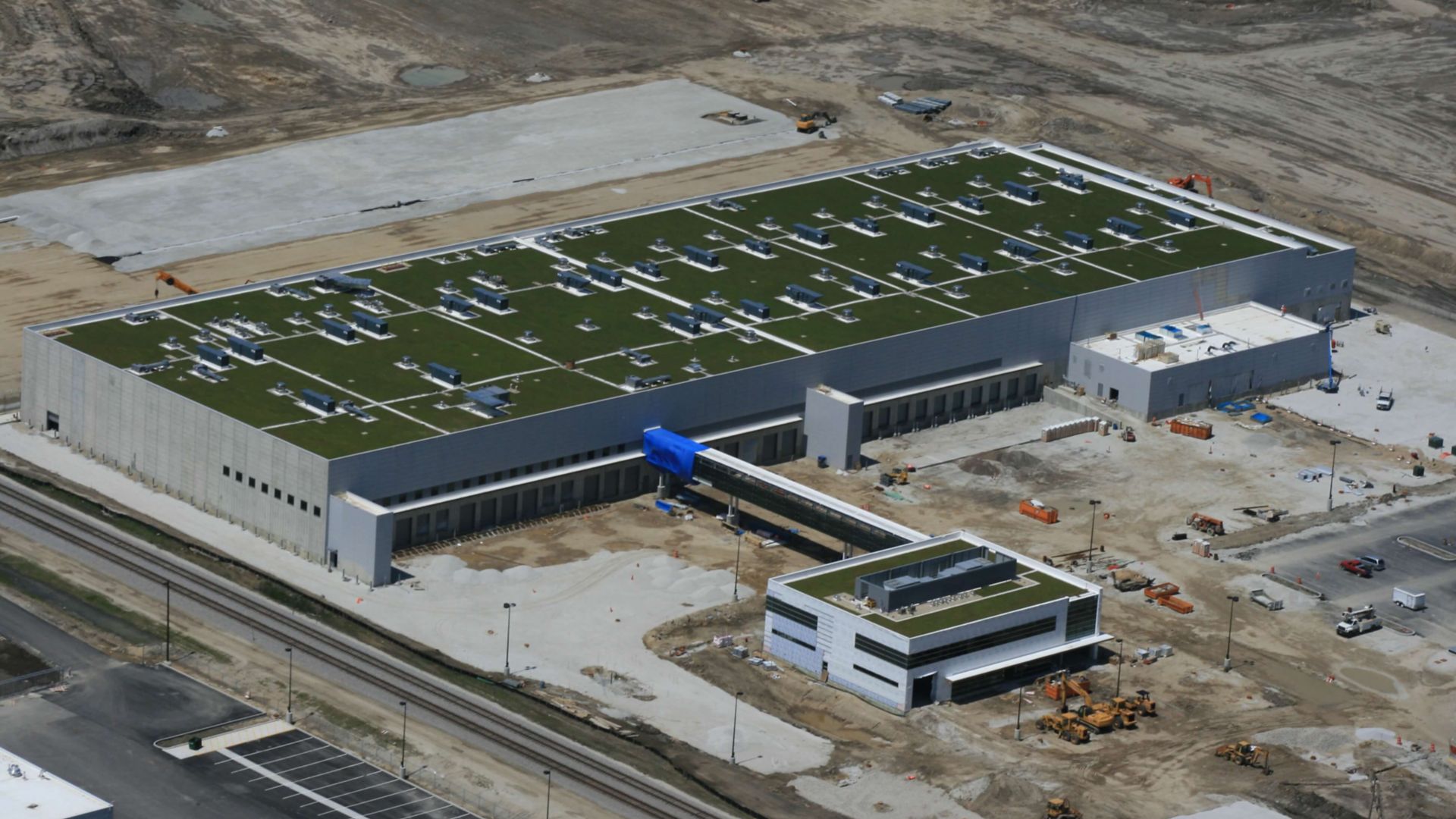2010
Chicago, Illinois
Sika Sarnafil Protects Largest Green Roof Located at U.S. Airport
When you are creating the largest green roof at an airport in the United States, you want to make sure it “absolutely, positively” is going to be trouble-free. That was the task facing the parties involved in the design and installation of the roof on the FedEx Cargo Relocation Facility at O’Hare International Airport in Chicago.
This project, consisting of three separate buildings and part of the O’Hare Modernization Program (OMP), had to meet the City of Chicago’s requirements for vegetated green roofing. To that end, the200,000 square feet of the FedEx Cargo Relocation facility roof includes 165,000 sq.ft. of vegetative roof – or approximately 3.9 acres.
“The creation of the green roof space is a key component of going green across the City of Chicago, and at O’Hare and Midway International Airports,” said Chicago Department of Aviation Commissioner Rosemarie S. Andolino. “I want to commend FedEx for making sustainability a priority on their new replacement cargo facility at O’Hare, which features the largest green roof at an airport in the U.S.”
Added Gregg Cunningham, spokesperson for the Chicago Department of Aviation, “One of the many benefits of installing green roofs at O’Hare and Midway International Airports is that we have the opportunity to counteract the Urban Heat Island Effect typically found at an airport. Other benefits of creating green roof space include lower operating costs, improved long-term roof performance, reduced air emission impacts, improved air quality, interior and exterior noise reduction, and reduced storm water runoff.” The FedEx green roof is expected to retain an amazing two million gallons of storm water annually.
Elevated Requirements
Steve Olson, AIA, LEED AP, associate principal at Solomon Cordwell Buenz of Chicago, the architect on the project, explained that the new roof design had to meet the needs of FedEx and its insurer, FM Global. “FedEx wanted a roof which allowed you to identify leaks quickly, and which was low maintenance.” The building also had to meet FM’s 1-35 Green Roof guideline, which is still in development and which may use the FedEx roof as a model.
The airport location also came with certain restrictions. “Obviously, you don’t want any vegetation that will attract birds,” stated Ernest C. Wong, principal at Site Design Group, Ltd of Chicago, the landscape architect on the project. “We also decided to use a pre-vegetated mat system because it is wind-uplift resistant, can be installed quickly, and would discourage foreign object debris (FOD) into an active airspace both during and after construction.”
Sika Sarnafil Scores High
After determining the important requirements and looking at several different roofing systems, it was decided the best solution was the Sika Sarnafil system. “FedEx has used Sika Sarnafil systems before with good results, so that was a big plus,” Olson said. “We also wanted a system that had a proven track record with green roofs, and which could also give us a unified approach.”
In addition, the Sika Sarnafil roof can also be used with the Electric Field Vector Mapping® (EFVM®) system, which uses pulses of low voltage electricity to detect roof system breaches, even with the vegetative covering place. The breach can then be easily identified and repaired.
“We were very happy with the decision to go with the Sika Sarnafil system,” remarked Wong. “They have a very good membrane and we like their capacity for waterproofing and their ability to accommodate the pre-vegetated mat.”
“The Sika Sarnafil representatives were very helpful with the technical details, “Olson stated. “They helped to complete the specification so it could be bid for city requirements.”
An Installation That Delivered
Installation of the system consisted of a sloped metal deck covered with a gypsum roof board underlayment, Sarnavap 10 vapor barrier, two layers of polyisocyanurate insulation, the EFVM ground screen, a gypsum roof board coverboard, and then the fully-adhered Sika Sarnafil feltback membrane. There were also 6,000 24 inch x 24 inch pavers installed to create maintenance paths on the green roof. Roofing contractor All American Exterior Solutions, Inc., of Lake Zurich, Illinois installed the roofing system and pavers while Intrinsic Landscaping, Inc., of Glenview, Illinois installed the green roof.
“We had to work on an accelerated schedule because the work began in September and we wanted to enclose the building prior to the onset of winter conditions,” Willie Hedrick, project manager at All American stated. “we also had to carefully manage and schedule delivery of a lot of product.”
“Because we were near active runaways, we weren’t able to use a tall crane as originally anticipated,” Kurt Horvath, president of Intrinsic Landscaping said. “Instead we had to bring in pneumatic blowers to blow soil and aggregate onto the roof.”
Another issue was access to the building. “The backside of the building was inaccessible to us because the concrete apron was being constructed at the same time,” Horvath explained. “That changed the dynamics of everything and basically meant we could only access the building from two sides. All told, we spent four months preparing the job to make sure we had everything covered regarding going across the roof.” The preparation paid off, he remarked, because the entire vegetative roof work was completed in 17days.
“The installation was a pretty impressive operation,” Olson remarked. “Everything came together very nicely.”
It was this teamwork and professionalism that earned All American Exterior Solutions First Place in Sika Sarnafil’s 2010 Contractor Project of the Year, Sustainability Category.
A First Class Result
Today the roof is doing well, according to all reports. “We are very happy with the way it came out,” Hedrick said. “It was a very difficult job but our team worked together and the result was a nice final product.”
“It’s a beautiful roof,” Horvath added.
“Had I known the roof was going to look this good I would’ve built an observation deck!” Olson remarked.
Would they use the Sika Sarnafil system again? “Absolutely!” said Olson and Wong.

